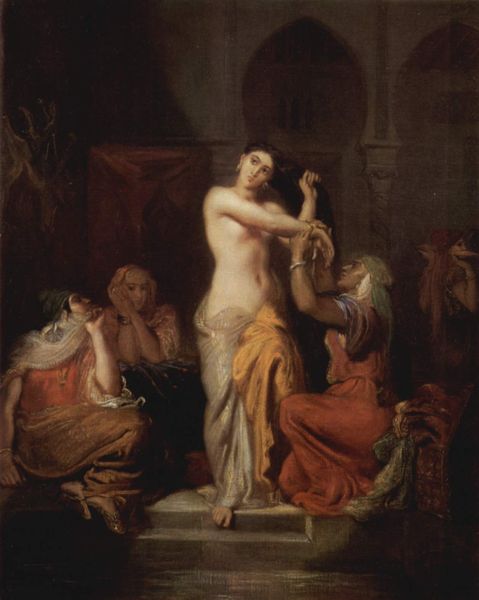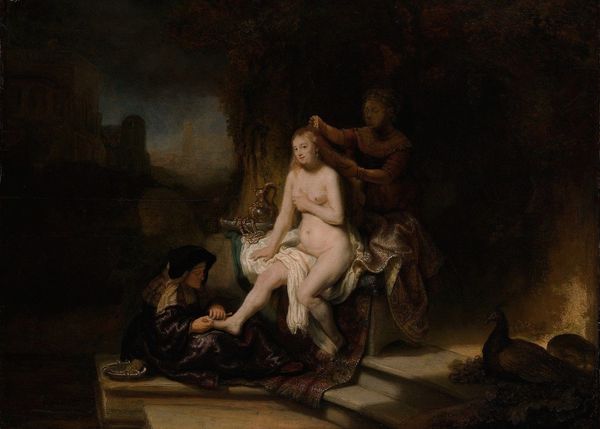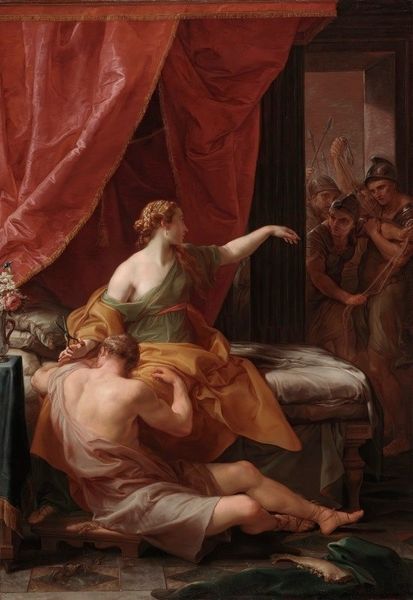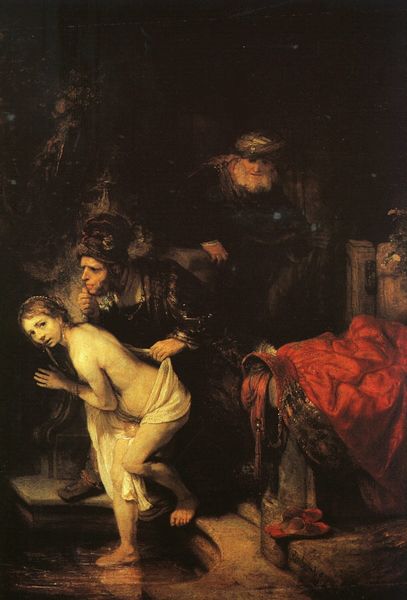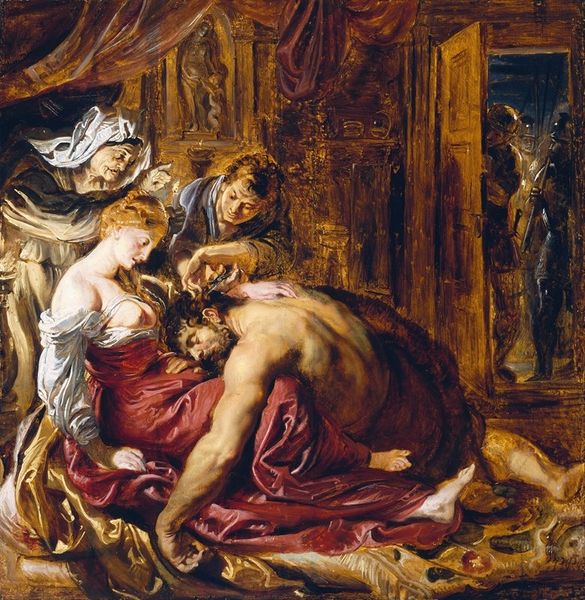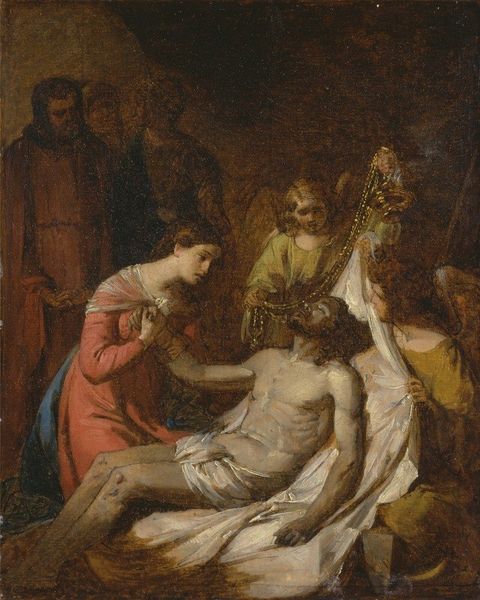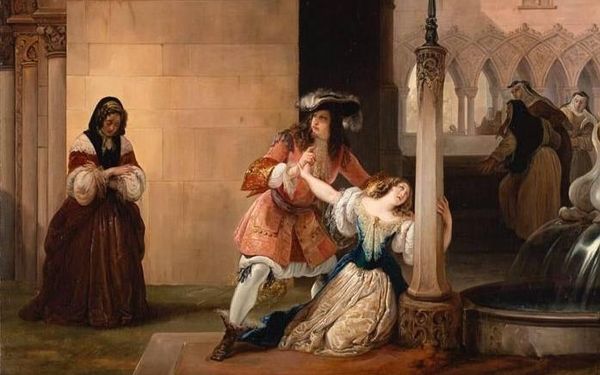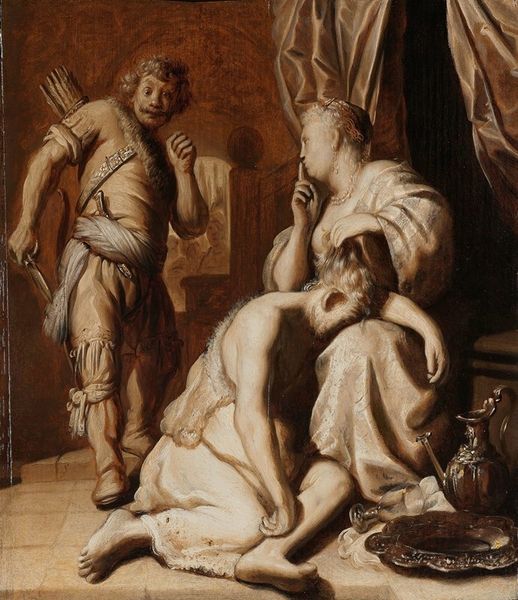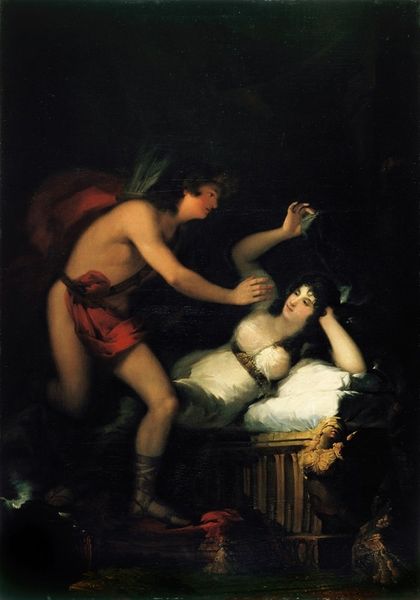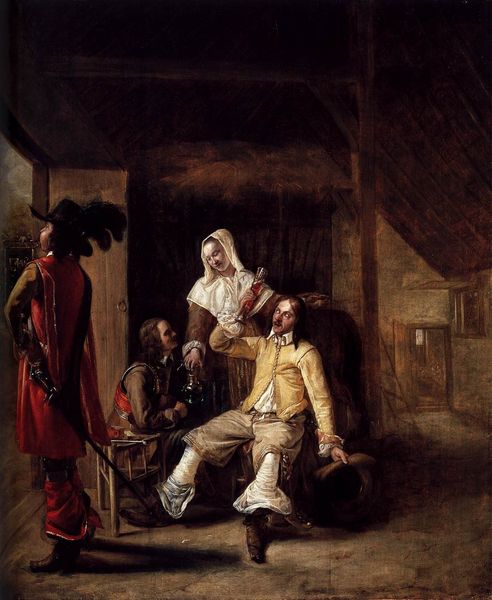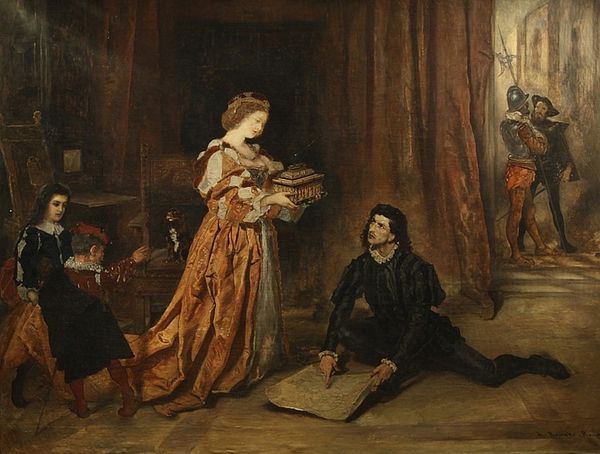
#
figurative
#
green hue
#
character art
#
green tone
#
possibly oil pastel
#
neo expressionist
#
dark silhouette
#
green background
#
underpainting
#
muted green
#
painting painterly
Copyright: Public Domain: Artvee
Editor: Here we have Eugène Delacroix's "Desdémone maudite par son père," painted in 1852. It's a powerfully dramatic scene! Desdemona is on her knees, and the father figure is looming over her, red robe billowing. The mood is really intense. I’m curious, what is your take on it? Curator: Indeed, it’s charged. Considering Delacroix’s historical moment, remember the shifting theatrical conventions of the mid-19th century. Think about the rise of melodrama and the performance of intense emotion on stage. The painting isn’t just a representation of a Shakespearean scene, it’s actively *performing* the drama for its viewers. Editor: Performing, how so? Curator: Look at the poses, the theatrical lighting, the bold colors! It pulls from the popular theater of its time. Delacroix isn’t just illustrating Shakespeare, he’s using painting to deliver the same emotional punch as a live theatrical production. Editor: That’s a really good point, actually. It makes sense, viewing it through that lens. Is there more going on in the staging of the artwork? Curator: Absolutely. Now think about who got to *see* this painting back then. The salon audience, predominantly upper-middle-class, would've been consuming a socially sanctioned narrative about family honor and patriarchal authority, all packaged as high art. It makes you wonder what kind of political statement, if any, it was trying to convey beyond what meets the eye. Editor: This really reshapes my initial view of it as solely a dramatic scene! Seeing it as participating in social and political conversations of its time adds a whole layer. Thanks. Curator: Precisely. Hopefully this contributes a more nuanced experience for our listeners too.
Comments
No comments
Be the first to comment and join the conversation on the ultimate creative platform.

